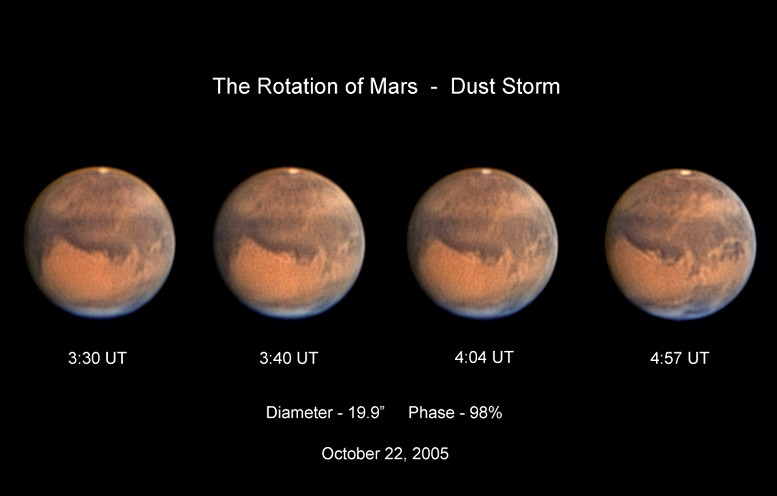
|
Credit & Copyright: Chris Cook
Explanation:
This October, Mars has become a
bright, yellowish star in
planet Earth's sky as it approaches
oppositon, the period
when Mars and Earth pass close as they orbit the Sun.
How close is Mars?
A mere 70 million kilometers or so, close enough to allow
Earth-bound
astronomers excellent views of the
alluring Red Planet.
For example,
this
series of sharp Mars images follows the development of a dust storm
as the planet rotates from right to left.
The telescopic views clearly show details of the
martian surface,
including the planet's southern ice cap (top) and
hood of clouds over the north pole at the bottom edge.
The dust storm
itself is visible as light yellowish band
across an otherwise dark region in the southern hemisphere.
Even if a telescope isn't handy, be sure to check out
Mars soon.
It will continue to shine brightly in the night
over the coming days.
|
January February March April May June July August September October November December |
| |||||||||||||||||||||||||||||||||||||||||||||||||||||||
NASA Web Site Statements, Warnings, and Disclaimers
NASA Official: Jay Norris. Specific rights apply.
A service of: LHEA at NASA / GSFC
& Michigan Tech. U.
Based on Astronomy Picture
Of the Day
Publications with keywords: Mars - dust storm
Publications with words: Mars - dust storm
See also:
- APOD: 2025 September 28 Á Leopard Spots on Martian Rocks
- APOD: 2025 July 15 Á Collapse in Hebes Chasma on Mars
- APOD: 2025 July 6 Á The Spiral North Pole of Mars
- APOD: 2025 June 29 Á Dark Sand Cascades on Mars
- APOD: 2025 June 22 Á A Berry Bowl of Martian Spherules
- APOD: 2025 June 15 Á Two Worlds One Sun
- Perseverance Selfie with Ingenuity
